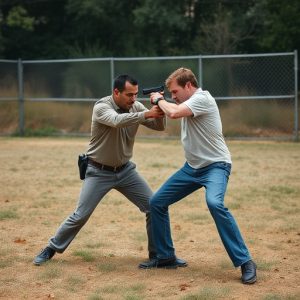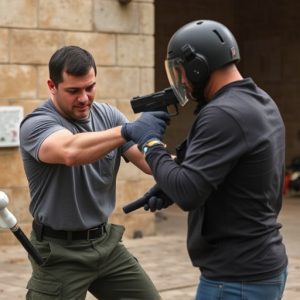Stun Gun Performance: Unlocking Efficiency Through Pulse Frequency
Choosing best stun guns for car defense involves understanding electrical pulse frequency (measured…….
Choosing best stun guns for car defense involves understanding electrical pulse frequency (measured in Hertz) as it directly impacts stun intensity and effectiveness. Higher frequencies (100,000-400,000 Hz) deliver more potent shocks without causing severe harm. Adjustable pulse rates allow users to customize intensity for different scenarios, from close-range deterrence to maintaining distance. Opting for devices with 200,000-300,000 Hz rates, high joule ratings (above 4.5), durable construction, and user-friendly design ensures effective personal safety while driving.
“Uncover the science behind stun guns with our comprehensive guide to electrical pulse frequency. ‘Understanding Electrical Pulse Frequency’ delves into the essence of stun gun performance, explaining how different pulse rates impact self-defense strategies.
Learn why ‘pulse rate’ is a key factor in choosing effective personal defense weapons, especially for car defense. We explore ‘best practices’ and provide an extensive review of top stun guns tailored for automotive security, ensuring you’re prepared with the right tool.”
- Understanding Electrical Pulse Frequency: The Backbone of Stun Gun Performance
- How Pulse Rate Affects the Efficacy of Self-Defense Guns
- Unlocking the Secrets: Best Practices for Choosing Stun Guns Based on Pulse Frequency
- A Comprehensive Guide to Car Defense Stun Guns and Their Pulse Rates
Understanding Electrical Pulse Frequency: The Backbone of Stun Gun Performance
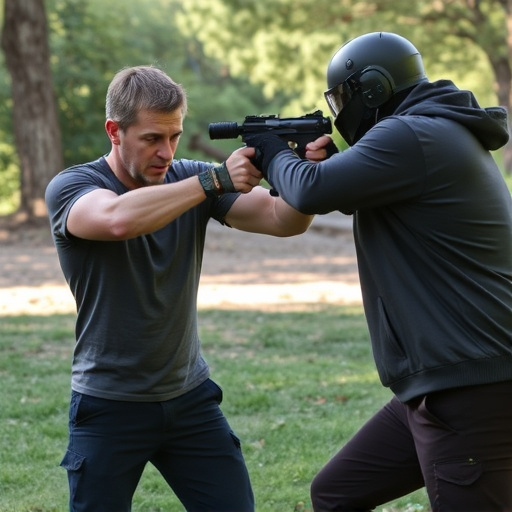
Understanding Electrical Pulse Frequency is key to comprehending the performance of stun guns, especially when considering the best stun guns for car defense. The frequency refers to the number of electrical pulses emitted per second and is measured in Hertz (Hz). Higher pulse frequencies generally result in more powerful stun effects, as they can disrupt muscle control at a faster rate. This is crucial for self-defense scenarios, where a swift and effective incapacitation is often necessary.
When exploring the best stun guns for car defense, look for models that offer adjustable pulse frequencies. This feature allows users to customize the stun intensity based on their needs, whether it’s for close-range encounters or longer-distance deterrence. A versatile stun gun capable of delivering a powerful high-frequency pulse can be an invaluable asset in ensuring personal safety while driving.
How Pulse Rate Affects the Efficacy of Self-Defense Guns
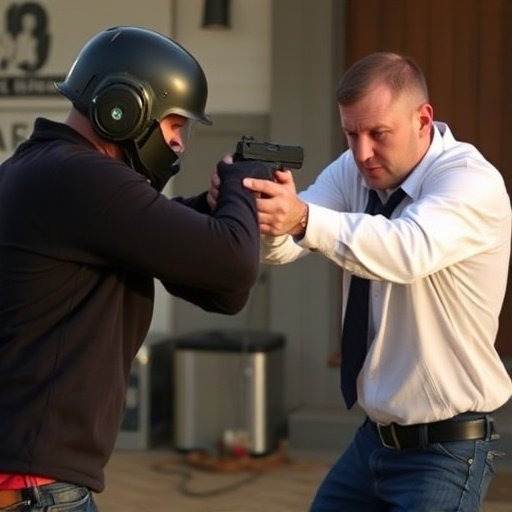
The pulse rate, or the number of electrical pulses per second, in a stun gun is a critical factor that influences its effectiveness as a self-defense tool, especially for those seeking the best stun guns for car defense. A higher pulse rate generally means more frequent shocks, which can increase the severity and duration of the immobilizing effect on a target. This is crucial in dynamic self-defense scenarios where quick, repeated jolts might be needed to subdue an attacker.
For car defense, where mobility and speed are essential, stun guns with adjustable pulse rates offer an advantage. Lower pulse rates can provide a longer reach and reduce the risk of excessive voltage discharge, making them ideal for maintaining distance from potential threats. In contrast, higher pulse rates close in on the target, ensuring rapid and powerful shocks that can disrupt muscle control and cause instant incapacitation. Thus, the choice between best stun guns for car defense involves balancing mobility, range, and power based on the user’s needs and the expected threat level.
Unlocking the Secrets: Best Practices for Choosing Stun Guns Based on Pulse Frequency
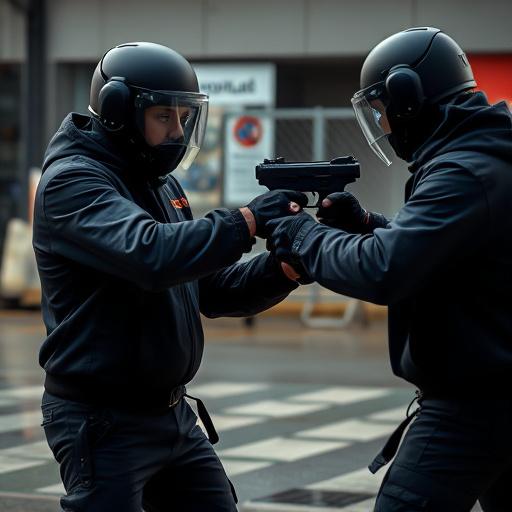
Unlocking the Secrets: Best Practices for Choosing Stun Guns Based on Pulse Frequency
When selecting a stun gun for car defense, understanding pulse frequency is key. This parameter dictates the intensity and effectiveness of the electrical shock delivered, crucial for neutralizing an attacker swiftly and safely. Opting for best stun guns for car defense involves choosing models with frequencies ranging between 100,000 to 400,000 Hz—this range ensures powerful jolts that can subdue an assailant without causing serious harm.
Factors like power output, battery life, and ease of use also play significant roles. For optimal car defense, consider stun guns with higher joule ratings (typically above 4.5 joules) for increased impact. Moreover, durable construction and a compact design enhance usability, making the device easily accessible within reach during emergencies. Always prioritize safety features like automatic shut-off mechanisms to avoid accidental shocks.
A Comprehensive Guide to Car Defense Stun Guns and Their Pulse Rates

When it comes to choosing the best stun guns for car defense, understanding the electrical pulse frequency is key. These devices use high-voltage, low-current electric pulses to incapacitate an assailant temporarily, and the pulse rate—measured in hertz (Hz)—determines their effectiveness. A higher pulse rate means more frequent shocks, potentially increasing the device’s impact without causing unnecessary harm.
Stun guns with pulse rates typically range from 100,000 Hz to 400,000 Hz or higher. For car defense, consider weapons with rates around 200,000 Hz to 300,000 Hz, which offer a balance between power and control. This range ensures strong enough shocks to deter an attacker while allowing for precise application, minimizing collateral damage and ensuring user safety. Look for models that are specifically designed for car defense, as they often incorporate features tailored to this use case, such as compact sizes and easy activation mechanisms.
When selecting a stun gun, especially for car defense, understanding the electrical pulse frequency is key. Each stun gun’s performance hinges on its pulse rate, which affects how effectively it disables an attacker. This article has explored the impact of pulse rate, offered best practices for choosing stun guns, and provided a comprehensive guide to car defense options. For those seeking the best stun guns for car defense, considering the specific pulse frequency suited to your needs is essential for ensuring your safety and peace of mind while on the road.

